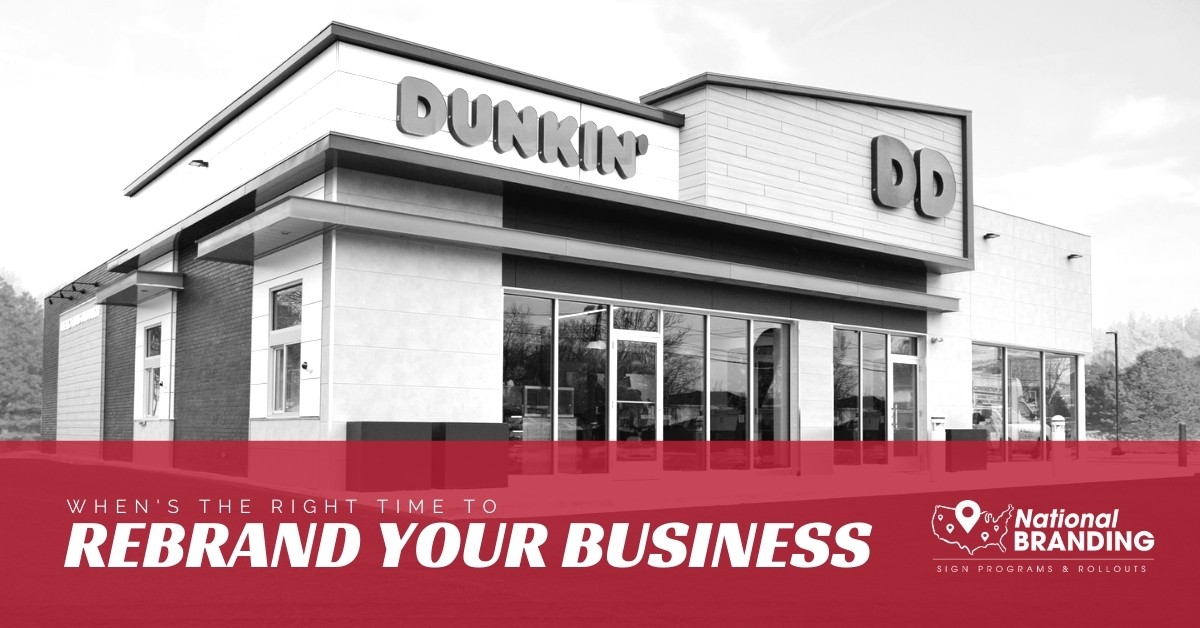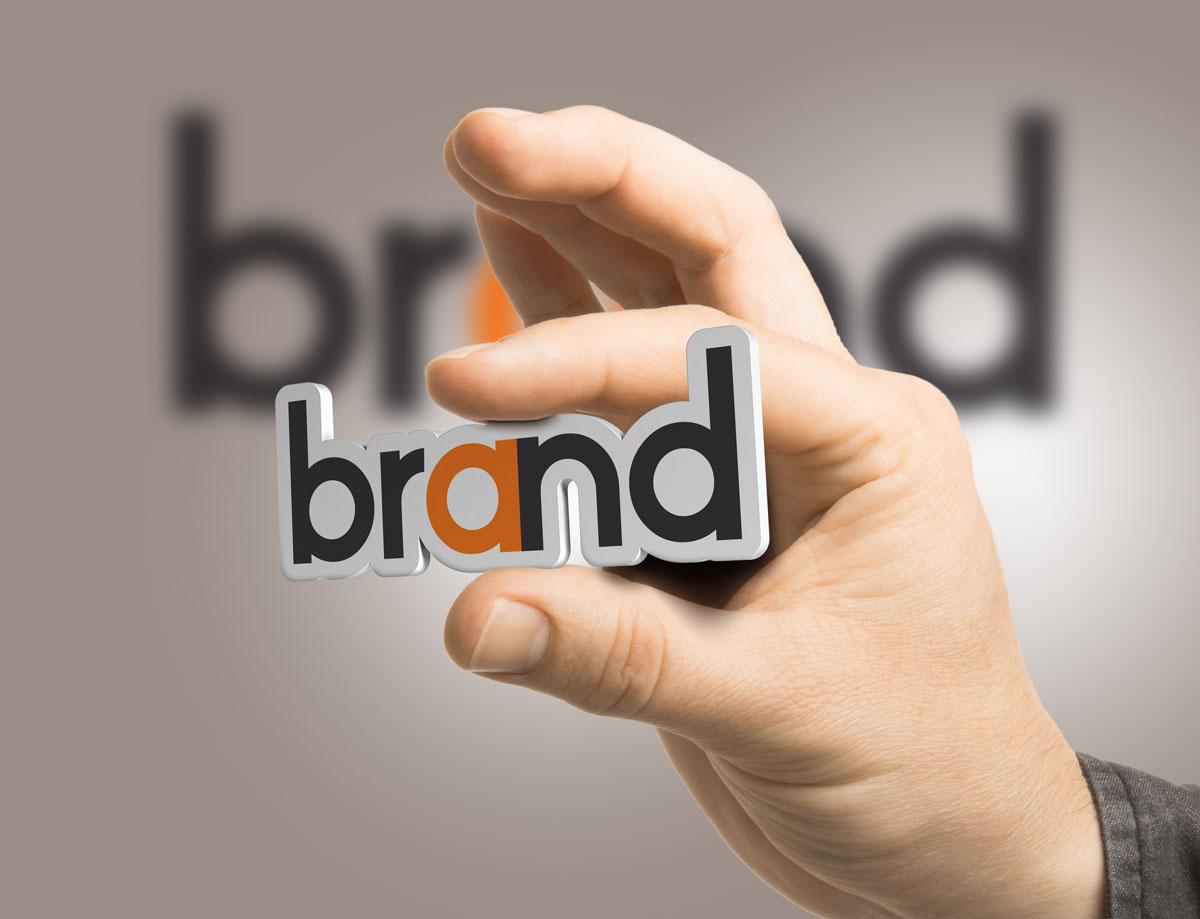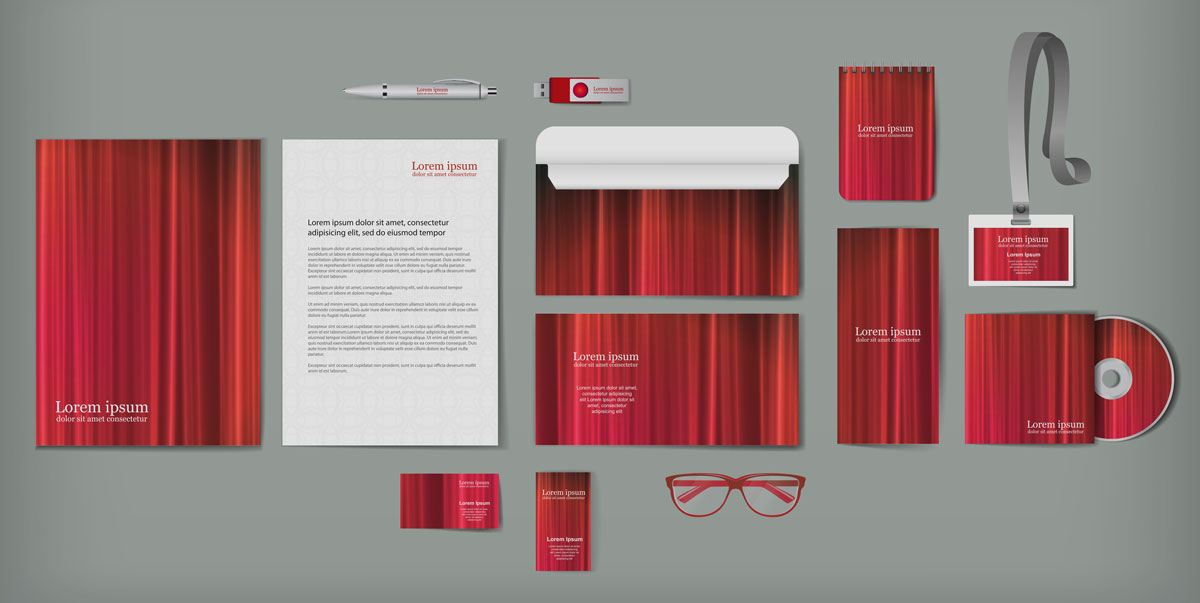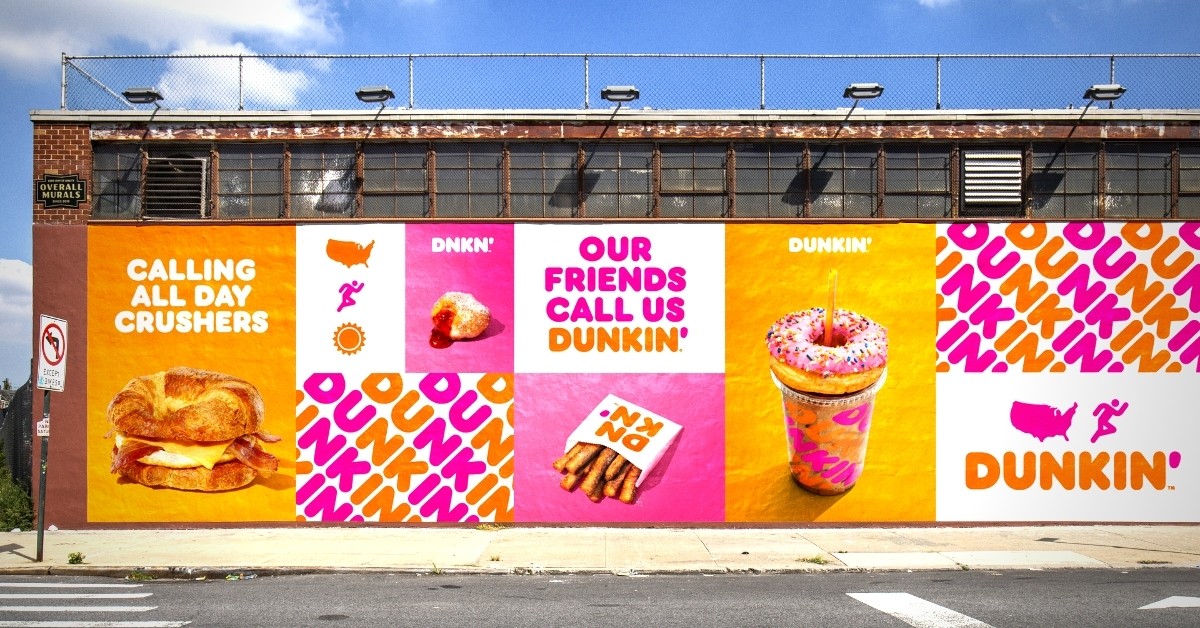
The year 2020 has brought on many businesses challenges, which prompted creative thinking and changes.
Using that entrepreneurial thinking that’s the foundation to every business, owners and their team members explored how to best reach their customers. Services were expanded beyond their store walls. A strong effort was put into digital presence. And — seeing the effort businesses put in — neighbors stopped taking their mom and pop shops for granted and remembered the importance of shopping locally.
Rebranding is more than a logo makeover — it’s all about creating a new and improved customer perception. And this is one of National Branding’s areas of expertise.
With the updated offerings and renewed consumer attention… is now the right time to rebrand?
Maybe. No two businesses, even when you own a franchise, are the same. So there’s not a one-size-fits-all answer. But there are questions you can ask — and branding experts to consult — to see if now is the right time to rebrand yours.
Before we talk rebranding, let’s look into how the core business practice of branding began.
Where did the term come from?
You’re probably familiar that branding is a common practice for marking cattle so ranchers could identify their animals. That’s how the term brand originated in the 1800s. However, it doesn’t stop there, thanks to our friends over at Coca-Cola.
In the 1800s, people sat in an Atlanta drug store and drank a new carbonated beverage. But they weren’t just there for the taste. Before it was offered at the soda fountain, thinking went into the name — the business partners behind Coca-Cola wanted a unique script and thought “the two Cs would look well in advertising.” In the store, it was accompanied by the promise that it would be “delicious and refreshing.” The customers perceived that this soda was different and distinguishable among the competition. Perception became reality and people saw how essential branding was to their business.

What exactly is a brand?
It’s the way a customer thinks and feels when they hear your business name.
You might not have full control over that — but there are tangible aspects of branding that can set you up for success. Logos help people visually identify who you are. A company-selected color palette and font show consistency, which creates trust. Mottos and mission statements offer promises and goals. None of these things alone make a brand. But when used together — along with customer experiences — they help build your brand.
Successful branding is important because it’s tied to stronger ROI, an engaged workplace and a loyal customer base.
With the branding basics covered, let’s look into if now is the right time for you to strongly consider a rebrand.
Evaluate your brand.
Look to see where your brand is currently. You need to know where you are at before you know where you are going.
- Name what sets you apart from competitors.
Competition is what makes us better. So check out what’s out there. Assess your biggest competitors’ communications. Look at their website, marketing materials and social channels. What is their brand saying about them? If it’s saying something similar to yours, what can you do to differentiate yourself?
If you can’t answer what’s different about what you offer, there are branding experts who can help you create a strategy.
If you can’t answer what’s different about what you offer, there are branding experts who can help you create a strategy.
If you can answer that, take it to the next level. Ask yourself: Do your customers associate your unique services and products with your name?
- Define how you want to be perceived.
When your customers have finished using your product or service, how do you want them to describe their experience?
Make sure that the perception you want isn’t cliche. An example of this is when a school hangs their hat on being “student-centered.” Well, that’s why schools exist — it doesn’t tell us anything. Customers need to know what makes you unique or better than the others.
- Hear from your customers (and employees).
Before making changes, make sure your customers and team are included in the process. They use your products or services, have an existing perception of your business, and want you to do well. They can tell you if your brand is keeping its promise and share ideas for improvement.
There are a variety of ways to reach out to your customer base to get feedback depending on your resources: Focus groups, email surveys, social media polls, phone surveys or online surveys.
Here are questions to consider:
– What words would you use to describe this brand?
– How does this brand make you feel?
– What does the brand’s logo make you think of?
– What problem does this brand solve?
– How could this brand improve customer service?
- Know where you want to go.
You are a leader and your team looks to you to make decisions that will benefit the company now and into the future. Using the information you’ve gathered, document what aspects of your business’ brand work, which need a little adjusting, and which are missing the mark.
Then create an action plan, which may include a rebrand.
Based on your evaluation, where are you at?

If you answered: “I’m doing ok. Why reinvent something that works?”
It’s always good to evaluate where you are and it’s great that your brand’s foundation is solid.
But there could be changes you’ve been meaning to make, but haven’t had the chance to yet. Maybe your social media presence needs a little more guidance or isn’t integrated into your website or marketing materials. Your look might need a few tweaks (the 2010s want their flourishes back) or you aren’t mobile optimized yet.
When you have nothing that’s major — but some things could use another look — It could be time for a refresh. That’s where the foundation of the brand stays the same, the visual presentation or your messaging is given quick, modernized enhancements.
Rebranding is recommended every 7-10 years. But refreshes are more frequent to keep your brand from appearing outdated or to make small changes to more strongly reflect your values. For example, Starbucks shifted their primary color from brown to green to draw attention to their Fairtrade position in the market and their environmentally-friendly approach.
If you answered: “I need a rebrand. Now what?”
Maybe your business has experienced major changes. Or you are preparing for growth thanks to a merger or new target market. You might just want a brand that resonates better with your audience. No matter your reason, a rebrand is an exciting business decision. It’s an opportunity for an improved brand or a fresh start all together.
On your rebranding journey, take these five steps toward success.
Step 1. Get the information you need to do it right.
There are four main groups to bring into the rebranding conversation at the information gathering stage — employees, stakeholders, customers and experts.
Employees. Gather information from your employees that includes their current perceptions, approaches to rebranding and views of company culture. Think about ways you could do this anonymously to ensure truthful answers. To glean additional information, look at positions and how many years of service employees give to your company. Also review exit interviews if that is a part of the separation process.
Stakeholders. Stakeholders are typically invested in your company’s strategy and position and understand it. They’ll offer insight on how you are doing based on the current strategy/positioning. They can share what you’re doing right and possible areas of improvement.
Customers. It’s all about finding their perception of your brand — we’ve already covered that, but it’s worth repeating because it is a vital part of the process.
Experts. There are professionals, like the National Branding team, who have experience and expertise in guiding a successful rebrand. Experts can help you better understand the future business landscape, where your brand will stand out, and how to get there.

Step 2. Position yourself.
When people think of your business, what benefits/standout services/better products do you want to be top of mind? Use the acquired knowledge from Step 1 to create a position that’s relevant and distinctive. Once you’ve decided this, create an internal positioning statement if your business’ positioning will change with the rebrand. This is a guiding light to clue in your team that changes on the way.
In the statement, be sure to include:
– Data supporting the new positioning
– The target audience
– Points of differentiation (that’s what’s going to make you stand out among competitors)
– Value propositions (why customers will choose you)
The more business jargon included, the harder it will be for people to understand — so keep the statement as clear and concise as possible.
Step 3. Create your brand identity. It’s about time we got here!
You’ve gathered your info and have a guiding statement. So now we get to the fun part — making these ideas become real. Here are some tips to consider when reinventing yourself.
Research the marketplace. Differentiation (there’s that word again) is why customers want to buy your brand rather than from the company across town or online. You are rebranding to stand out — so find your unique qualities and make sure it’s a focus in this process.
Remember who you are. What is a common thread in your business decisions? Family? Sustainability? Exceptional customer service? Whatever your core values are, infuse them into the brand’s identity.
Choose your color palette and brand font. Best practices say to pick 1-3 color shares for your primary color palette and choose 2-6 for secondary colors to use in your messaging. Keep in mind industry association and the psychology of color choices when choosing them. Brand fonts help clue the audience in your communication style. Whether your brand personality is quirky or serious, there’s a typography for you.
Location, location, location. Think about logo placement. Where will it be displayed on your social media channels? What about on your website? Where will it be in your store or on your products? Create examples to see what works best in each scenario and share with your team.
Test it out. Identify target personas and gather feedback in a way that can be easily shared with stakeholders. How do they perceive the new brand? What values do they see? Would they choose you over a competitor – why or why not?
Step 4. Now that you have a look — develop content internally.
Once you have a brand identity planned out, let the fun begin. Update your branded assets with your new look: Apps, social channels, website, email signatures, stationery and business cards, signage, collateral, messaging and more. It’s important to replace all of your old branding because inconsistent branding can be confusing and make the rebrand effort look disorganized — and that’s not a good look.
Also create Brand Identity Standards and Usage Guidelines — it’s a manual on how to best showcase this new look (more on that below) — for employees and business partners.

Step 5. Put your brand out into the world.
It’s launch time!
Designate brand ambassadors on your team to show enthusiasm and to help employees understand the new brand. Think about creating a FAQ document, digital or printed, that can address standard questions. It’s important to educate people on your new brand. Also consider building buzz around the brand reveal through new company swag or an event. If you decide an event will work best, realize that a virtual one might be needed depending on state COVID-related gathering restrictions. Here are some tips on putting together a successful virtual event.
As the rebranding becomes public, have your employees serve as brand ambassadors (hopefully they are wearing that new swag) to get your customers excited for the rebrand too.
We know word of mouth is great, but it needs added support from a communication plan. Get the news about your rebrand out in email campaigns, press releases, social channels, blogs and other information outlets.
Consistency is key: The brand toolkit
There’s a reason that a swoosh makes us think of a shoe company or a seashell brings a gas station to mind. The force behind it is consistent branding. That’s where Brand Identity Standards and Usage Guidelines come into play.
What to include in your business’ Brand Identity Standards and Usage Guidelines
Mission and vision. A short summary will give people insight into what your company’s values and goals, which will help them understand how to represent your brand.
Logos. Something as simple as having your logo pixelated on company-approved materials, may give way for people to question the quality of services you offer. Don’t let it happen. Be clear with your expectations of logo use.
- Include images of all approved logo versions in the guide and create an easy way for employees to download the approved images.
- List minimum size and proper logo proportions. This will avoid the pixelated and stretched logo.
- If there is more than one approved logo, show variations (reversed, in color, black and white) and say when it’s ok to use them.
- Visually show the ‘don’ts’. Have fun with this one. Give examples of what not to do with the logo — maybe give it a drop shadow to bring us back to 1998 or vertically stretch it for a funhouse mirror effect. Also include some examples that you’ve seen on company marketing materials in the past (without calling anyone out). It’s just as important to show what not to do as it is to explain how the logo should be used.
Fonts and typefaces. Fonts and typefaces are an important part of your brand — you don’t want Hobo or Comic Sans to show up and discredit the message your company sends out. But not everyone understands how typography communicates to the audience, which is why you need to make it clear in the guidelines.
- List what’s approved. Give fonts and typefaces (these are choices in a font family – light, italic, bold, regular) to use and share how they relate to your brand. Here’s a tip: Use a different font than the one in your logo; the contrast will help your messaging stand out.
- Typeface/font placement. If more than one font or font typeface is used, explain when each should be used (headlines, body text, captions, etc.).
- Include tracking and kerning ratios to maintain a consistent style when font size changes.
- Make it clear when you want copy to align left, right or centered.
Brand color palette. Since we’ve talked about this one already, we’ll just include a couple more pointers. In your guide, show the swatches of your chosen brand colors. When you do this, share the information needed to reproduce those colors accurately. Make sure to include: Color match (PANTONE name and number), the print color (CMYK), and the digital color (RGB and HEX codes).
Image use. Show examples of images that you feel are reflective of your brand. These can be from images taken by your communications team, social media shares (get permission), or an organized photoshoot. Once you have 10-20 images, create a digital space to house these so team members can download hi-res versions when needed. Make adding to the image bank a priority so images do not get publicly overused.
Your brand style guide will change over time — plan to review it at least once annually. To encourage team dedication in this effort, designate a place (Google Drive, Microsoft OneDrive or Dropbox Business) where employees with communication roles can share ideas on how to best update the guide.
Final thoughts: Whenever you rebrand, keep in mind these dos and don’ts.
DO ask your customers about your brand before making changes.
DON’T over complicate your message. Keep it simple.
DO consider a rebrand every 7-10 years, with smaller refreshes in between.
DON’T expect that employees will know how to communicate the new brand. Create a brand guide and toolkit for employees to use.
DO reach out to National Branding experts for guidance and direction in your business’ refresh or rebranding plan.
With more than 25 years of experience, National Branding has served hundreds of regional and national brands in every major industry across the United States. National Branding’s expertise includes consultation on how to best portray your brand, sign fabrication and installation of signage. National Branding doesn’t just build signs – they build brands.



